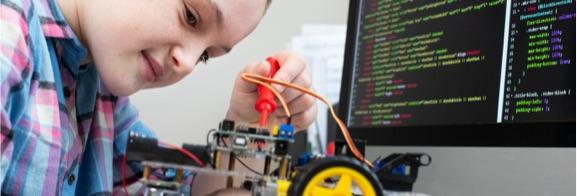
Food Web Challenge
by Hermelina Liddell
This is part of an Ecology Unit, where students will create a food web using a set of cards. Students will identify the organisms in the different trophic levels, create a series of food chains, then a food web.
Students will identify the invasive species and place it in the aquatic food. Students will work in groups of two and later on write a paragraph about their thinking on the impact of invasive species in the web.
Eventually, students will design, code and program an Edison V2 robot to see how changes in the transfer of matter and energy affect the organisms in the ecosystem. Students can use LEGOs to create and design an organism or a habitat, they can code and program the robot and demonstrate/present or compete with other robots in class!
Lesson Plan Link/URL
https://docs.google.com/presentation/d/1t1Mt43McR_01LQ6zwSWqgkGoeARTsD3n/edit?u…Subject Area
Science Life Science L2: Organisms & Energy Technology 4. Innovative Designer 5. Computational Thinker Engineering S2: Apply the Engineering Design Process S5: Apply Technology to Engineering English Language Arts (ELA) Writing
Featured
Off
Related Content

Grades:
9th Grade, 10th Grade, 11th Grade
Classes will build three different types of rockets, guess which style will have the highest altitude, launch and calculate results based on right triangle math!

Grades:
6th Grade, 7th Grade, 8th Grade
This STEM lesson focuses on technology and engineering. It was written for 6th through 8th grade, but it can be adjusted to fit other grades. It was made for groups of 3-4, it could be used for a

Grades:
6th Grade
Collaboratively, students will make a 3D-model of their chosen Arizona biome. Their model must show the different interrelationships between biotic and abiotic factors. After project making, students